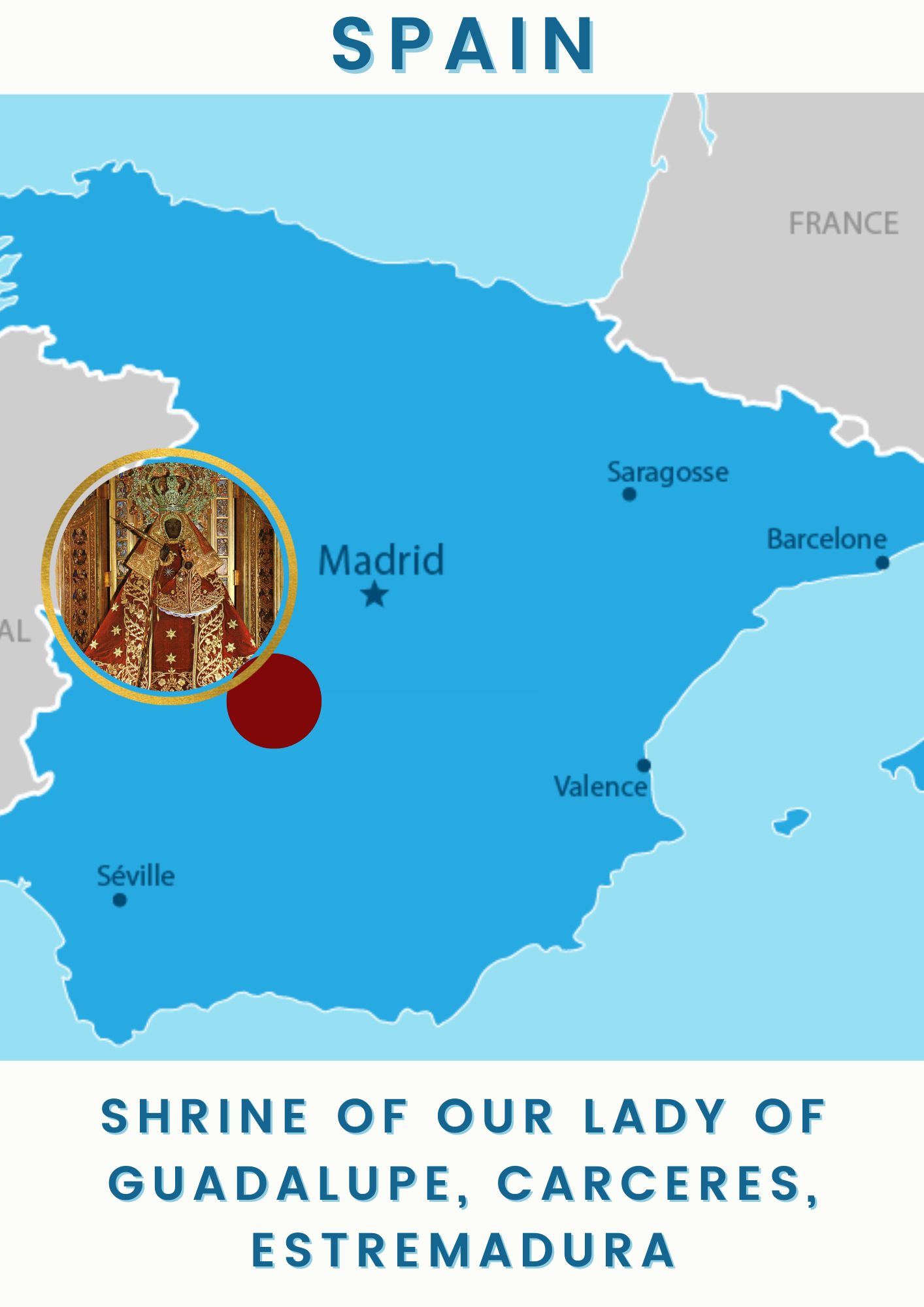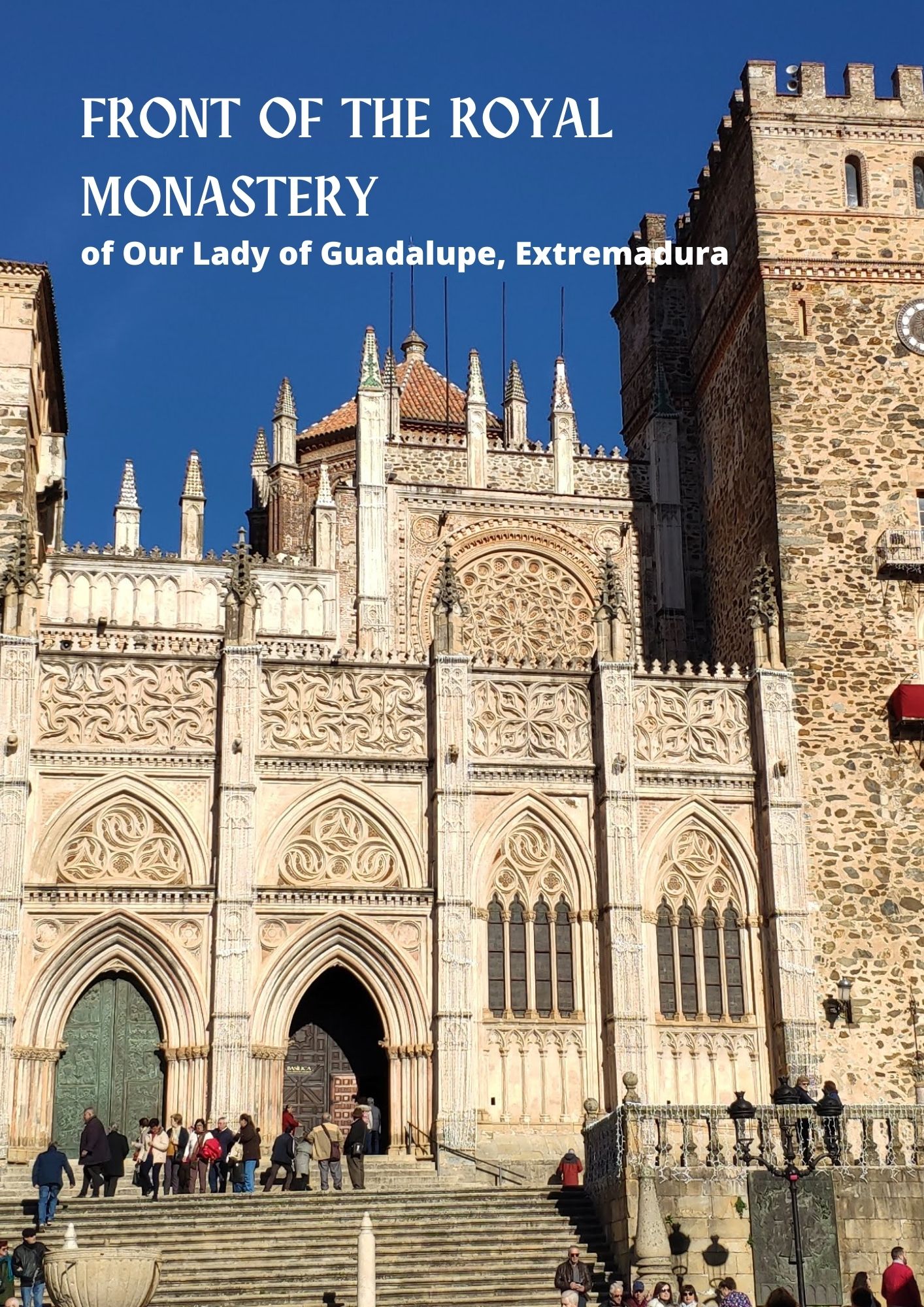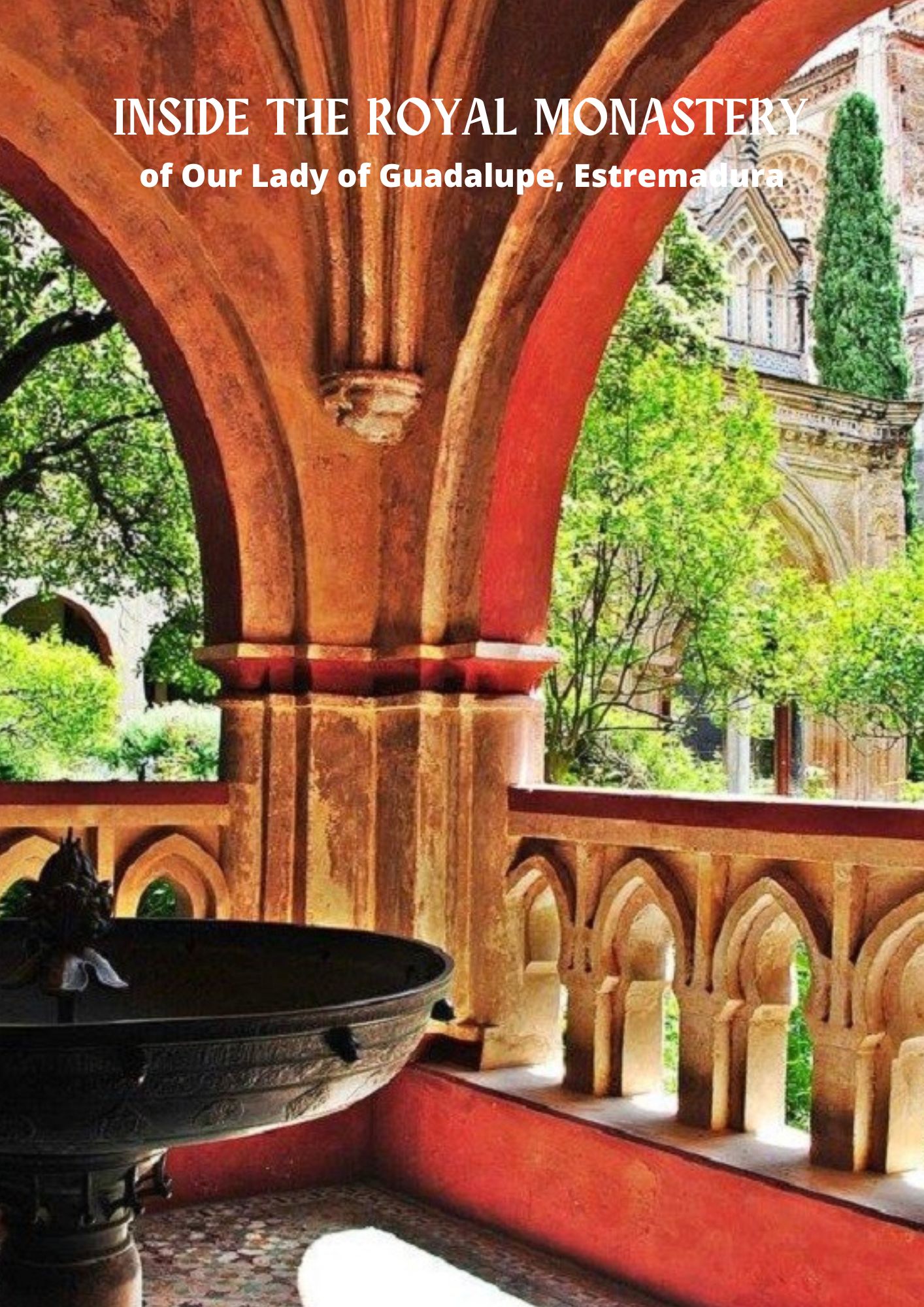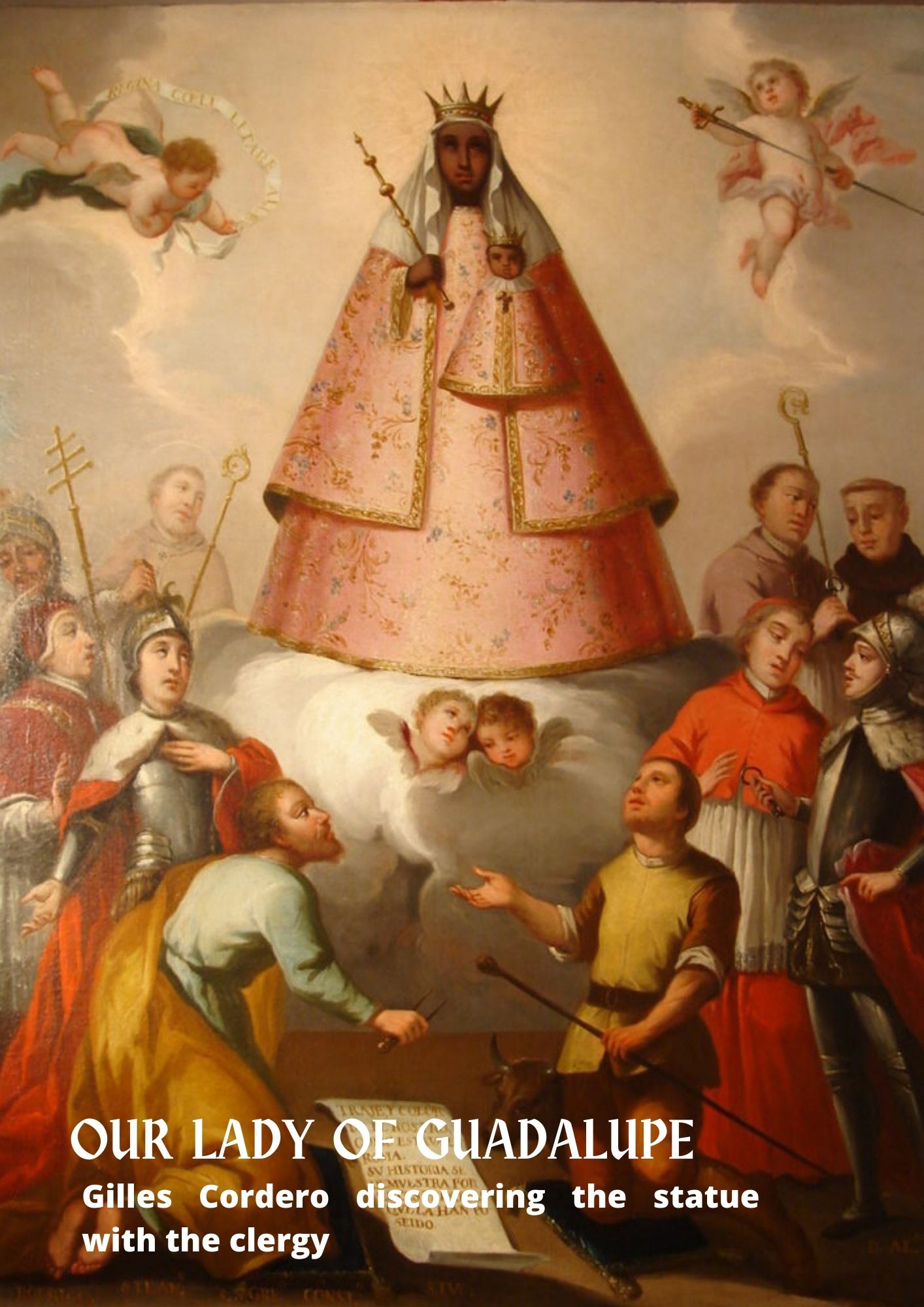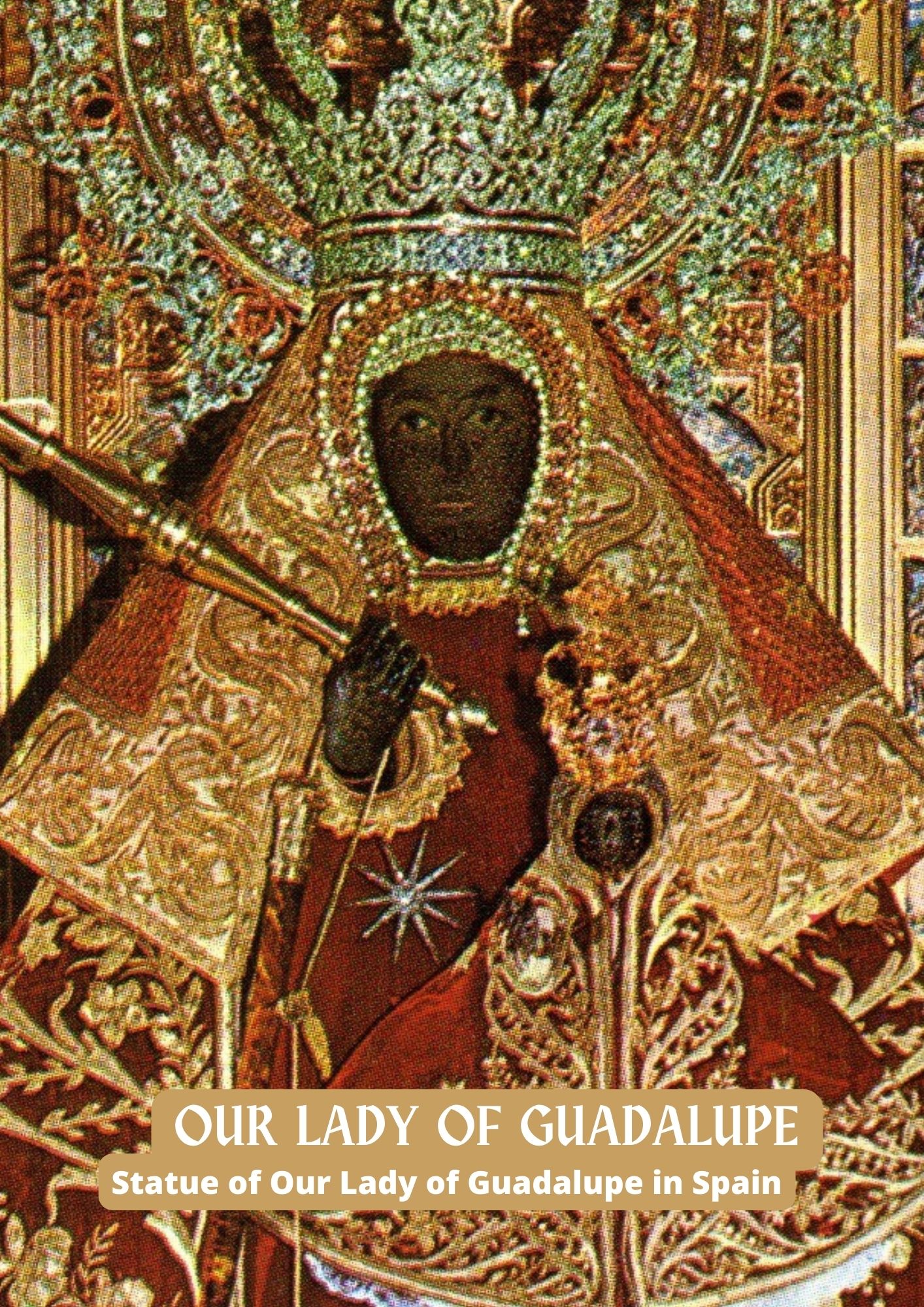For centuries it was the national shrine of all Spain. A one-metre high black wooden statue of the Virgin is still venerated there today. The manuscript found with the statue and signed by the ecclesiastical authorities of the time indicates that the statue was originally carved by the evangelist St. Luke himself, then brought to Rome in the 6th century and offered in 590 to St. Leander, archbishop of Seville, by Pope St. Gregory the Great.
At the time of the Arab invasion, priests fleeing Seville (714) took the statue and hid it in Extremadura, near a river called Guadalupe. It was there that in September 1323, following an apparition of the Virgin, a cowherd found it. The present statue probably dates from the last years of the 12th century and is made of cedar wood.
The story of its discovery is not a legend. A commission of enquiry appointed by the clergy of Caceres interviewed the cowherd shortly after the apparition and witnessed the discovery of the statue. The story takes place at a time when the Reconquista was already well underway and the Church, in the areas liberated from the Muslims, was regaining its rights and its sanctuaries. One evening, a cowherd named Gilles Cordero realised that he was missing an animal. After three days of searching in the Sierra, he found it as if it were dead but without any wound. As he was about to cut the animal to recover the skin, he made a sign of the cross on the animal’s belly, as if blessing bread before eating. At that moment, the cow stood up and at the same time the Virgin Mary appeared and said:
“Do not fear, I am Mary the Mother of God, Saviour of mankind. Take your cow, lead her to the sheepfold with the others, then go home and tell the clerics in Caceres what you have seen. Tell them from me that I sent you and that they all come here. They will dig under the stones in the same place where you found your dead cow.
They will find, buried under those stones, a statue of me. And when they have found it, tell them not to change its place, not to take it away. But let them build a little house to put it in. For there will come a time when the little house will become a church of great renown and a large town will arise around it.”
Gilles Cordero returned to Caceres. The clergy did not believe his story and the cowherd returned home to find his son dead. He prayed to the Virgin to bring his son back to life so that everyone would believe his miraculous story. When the priests prepared to celebrate the funeral, the son came back to life, stood up and said that “a woman had helped him to get up”. It was this second miracle that led the clergy to believe the cowherd’s story. A commission was then appointed to interrogate him and escort him to the place of the apparition. After the ground was dug up, a statue was indeed found in a slate-covered shelter. A temporary shrine of stones and branches was immediately built to protect the statue.
In 1330, King Alfonso XI, King of Castile and Leon, visited the site and had a chapel built. Then a monastery was established nearby. The Spanish kings, during the Reconquista, did not fail to come to invoke Our Lady of Guadalupe.

